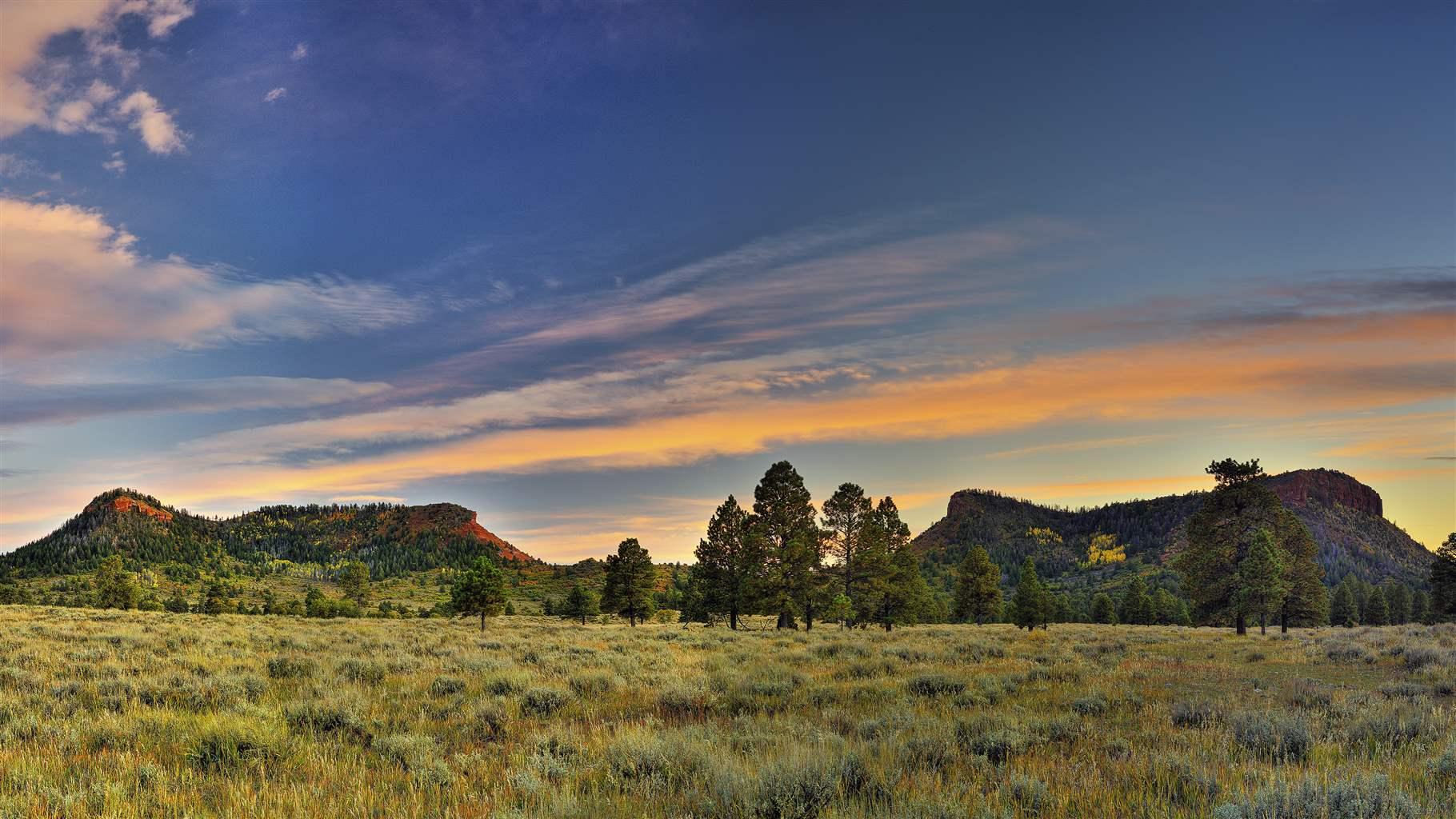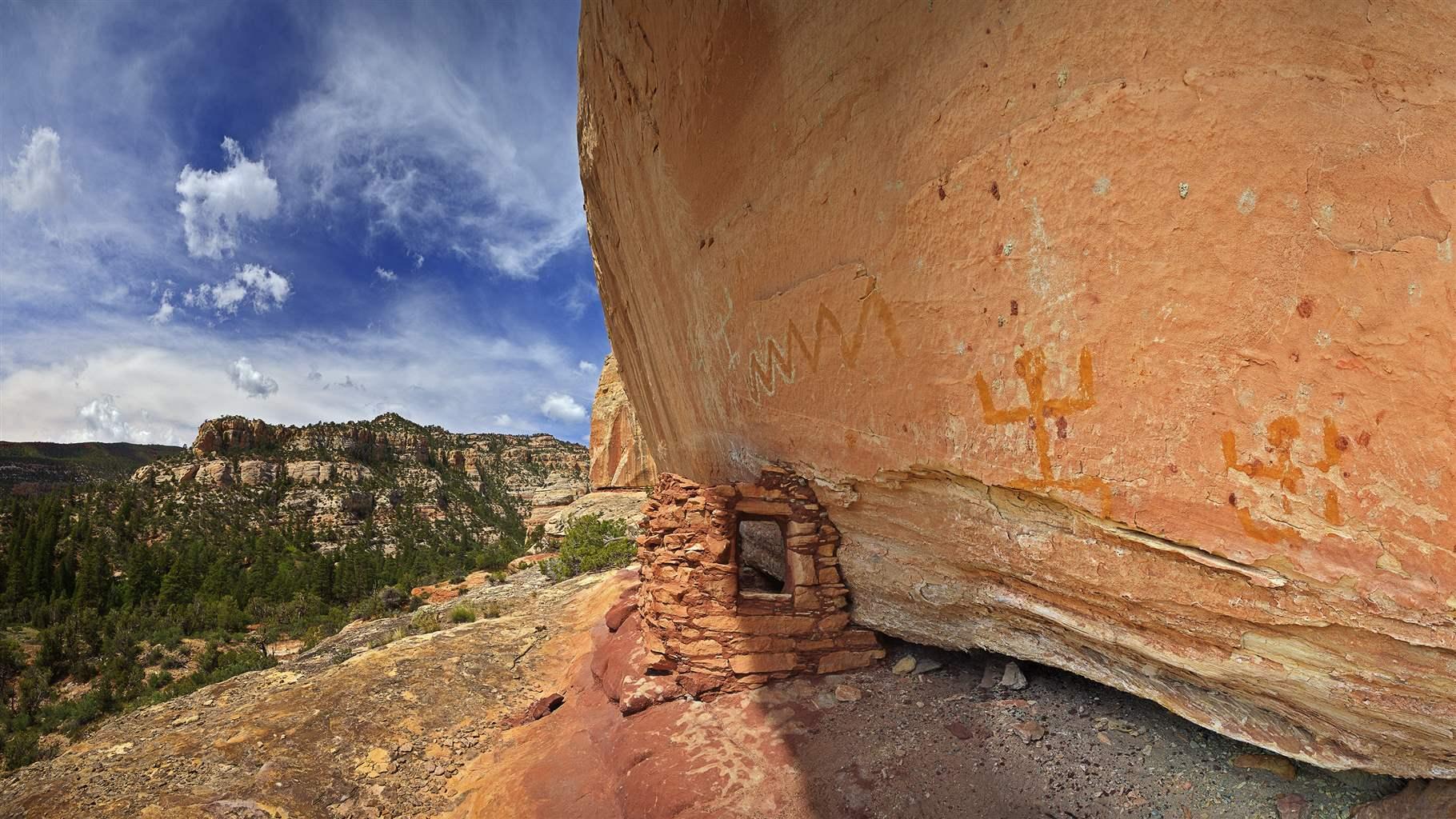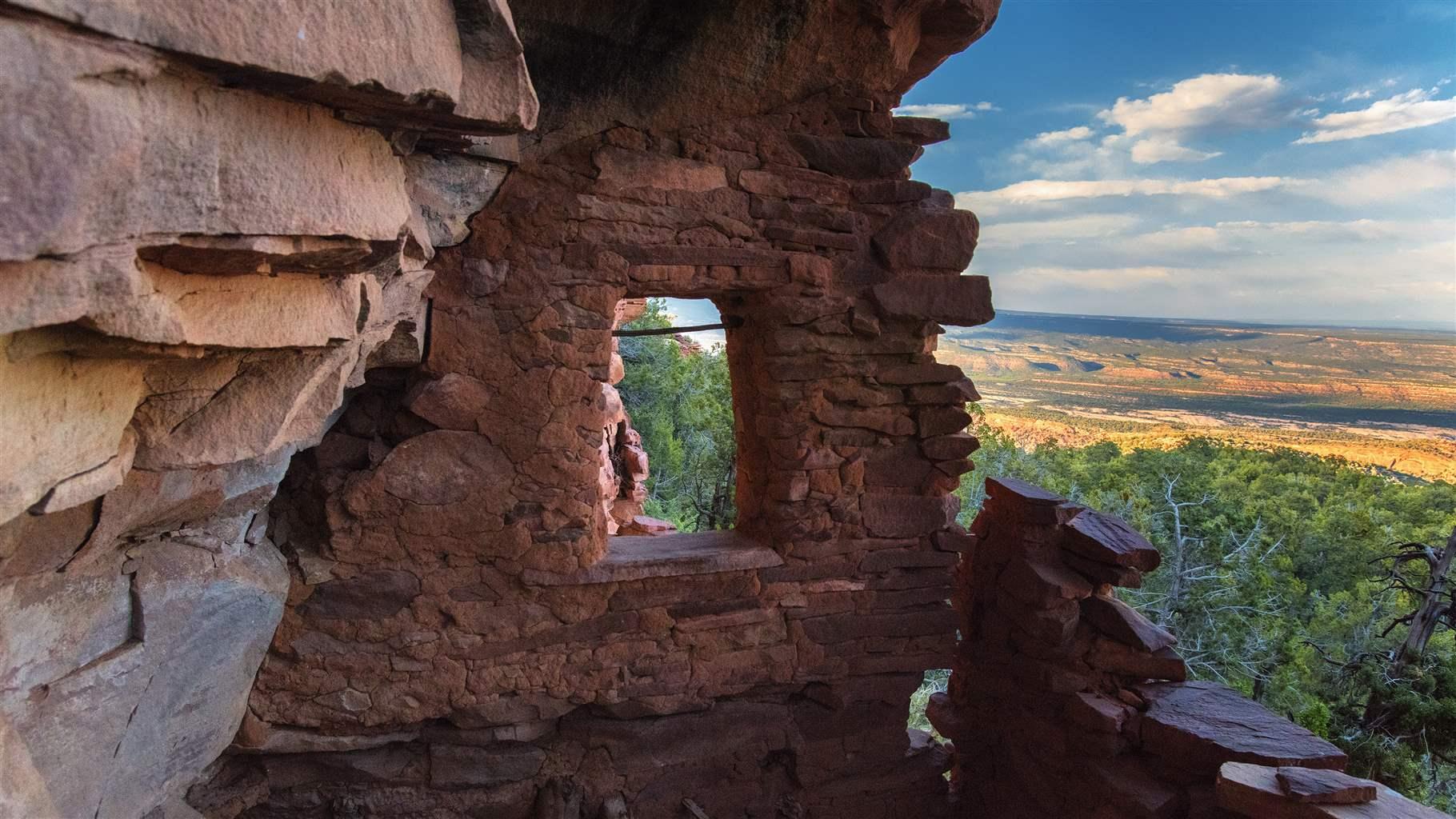Plan Advances That Would Drastically Reduce Protections for Bears Ears National Monument
Federal proposal puts significant cultural areas, fossil sites, and wildlife habitat at risk

Note: This article was updated Aug. 29 to clarify the government’s proposed management of lands it deemed as having wilderness characteristics. The photo captions have also been revised.
Southeastern Utah’s canyons, mountains, and plateaus have been home to indigenous peoples for thousands of years. In 2016, the 1.35 million-acre Bears Ears National Monument was designated to safeguard an array of natural and historic marvels. These lands are home to more than 100,000 cultural sites and geologic and other scientific wonders—including one of the world’s richest troves of Triassic-period fossils—and a diverse array of flora and fauna, among them elk, mule deer, and Utah’s most imperiled herd of desert bighorn sheep. Bears Ears also offers world-class outdoor recreation, most notably hiking, camping, and paddling.
President Barack Obama’s proclamation was in response to a request by a historic coalition of the Hopi Tribe, Navajo Nation, Ute Indian Tribe, Ute Mountain Ute Tribe, and Pueblo of Zuni, who together urged the U.S. government to conserve this living landscape for future generations and provide their nations with a meaningful voice in the area’s management.
In 2017, Bears Ears was among the national monuments under review by the Interior Department for possible boundary or management changes. Millions of Americans joined the Bears Ears Inter-Tribal Coalition in urging the administration to keep Bears Ears and other national monuments intact. Despite the outpouring of support for the monument, President Donald Trump signed a proclamation in December 2017 reducing the monument’s size by 85 percent and fragmenting the remainder into two separate units, eroding important cultural and ecological connections. The five tribes in the coalition, along with scientific organizations, conservation groups, and the outdoor retailer Patagonia, are challenging the administration’s action in federal court.
The Bureau of Land Management (BLM) and the U.S. Forest Service have proposed land use plans for the smaller monument that fail to incorporate input from the tribal nations that petitioned for protecting Bears Ears as required by the original monument proclamation. The federal plans also omit more than 1 million acres of the original monument that, according to that proclamation, must be analyzed and managed to ensure conservation of their geologic, cultural, and ecological value.
The agencies’ proposal fails to sufficiently protect the objects of historic and scientific interest that the monument was designated to safeguard. Specifically, the BLM and the Forest Service would allow off-road vehicle route development and other potentially damaging activity in culturally rich areas and places with high potential for yielding fossils. The agencies also suggest increasing harmful mechanical vegetation removal projects, including chaining, throughout the monument. Finally, as with other recent BLM land use plans, this proposal would not protect lands that the agencies have identified as having wilderness values.
“These lands are sacred to us, and they are being destroyed—sometimes inadvertently—by people who don’t understand our culture and way of life,” Carleton Bowekaty, lieutenant governor of the Zuni Pueblo and co-chair of the Bears Ears Inter-Tribal Coalition, told The Washington Post. “That’s why we want all of this area protected, so we can help educate others and share our traditions with all people.”
Bears Ears National Monument, as it was initially envisioned by the tribal nations and designated by President Obama, is a national treasure with resources that should be protected for future generations of Americans. To learn more and to submit a message to the Interior and Agriculture departments on the plan, please visit Pew’s Bears Ears action alert page.
John Gilroy directs The Pew Charitable Trusts’ U.S. public lands and rivers conservation program.









